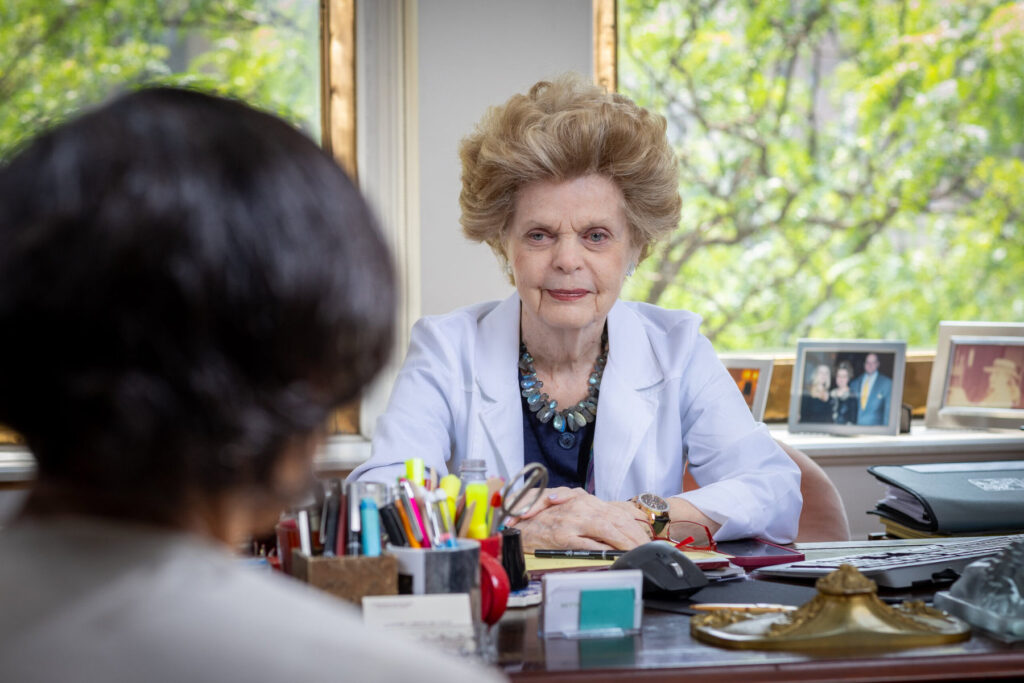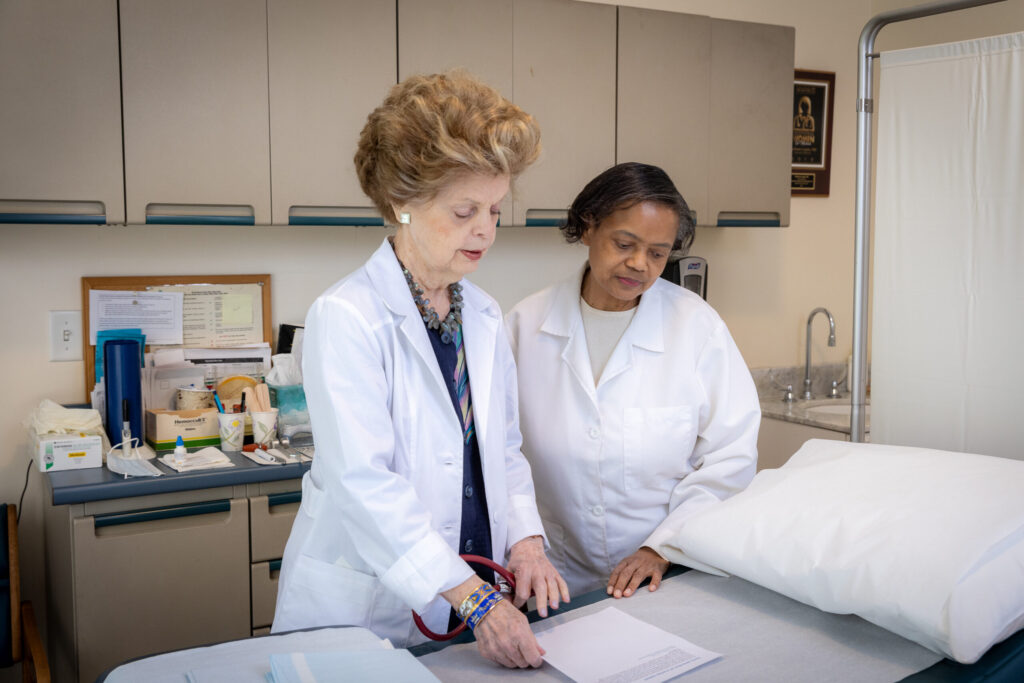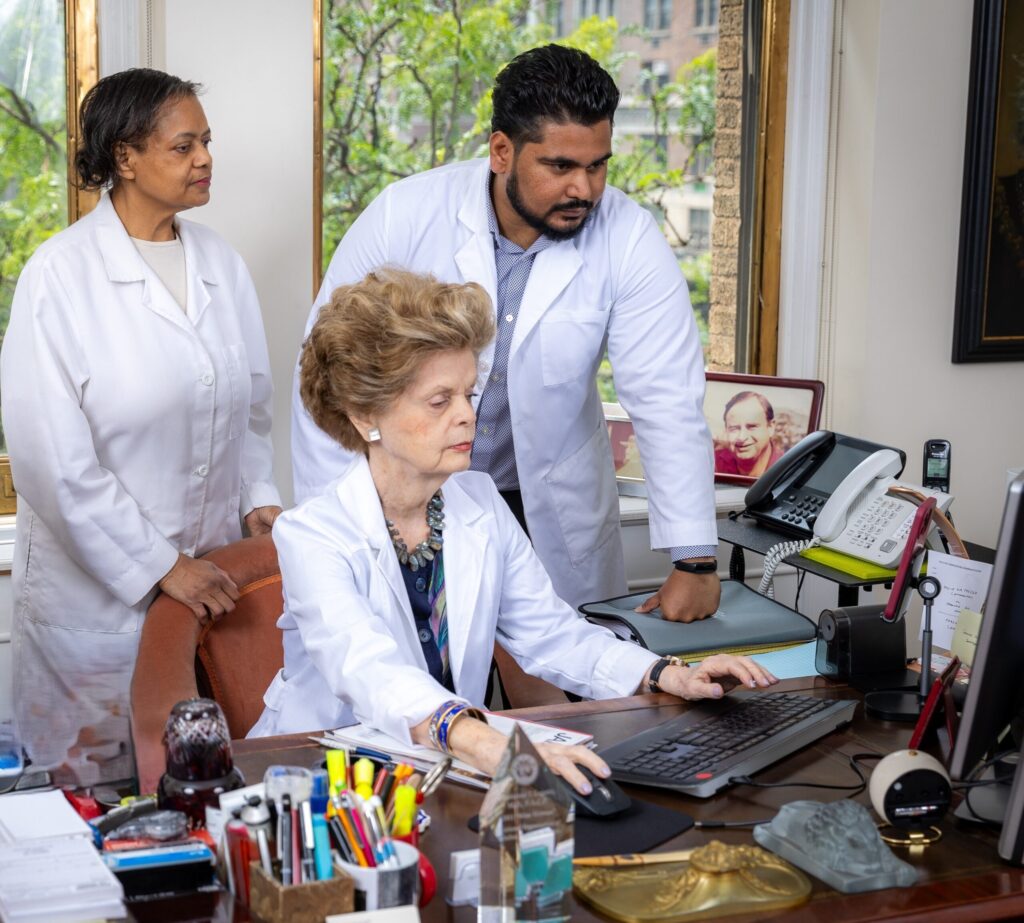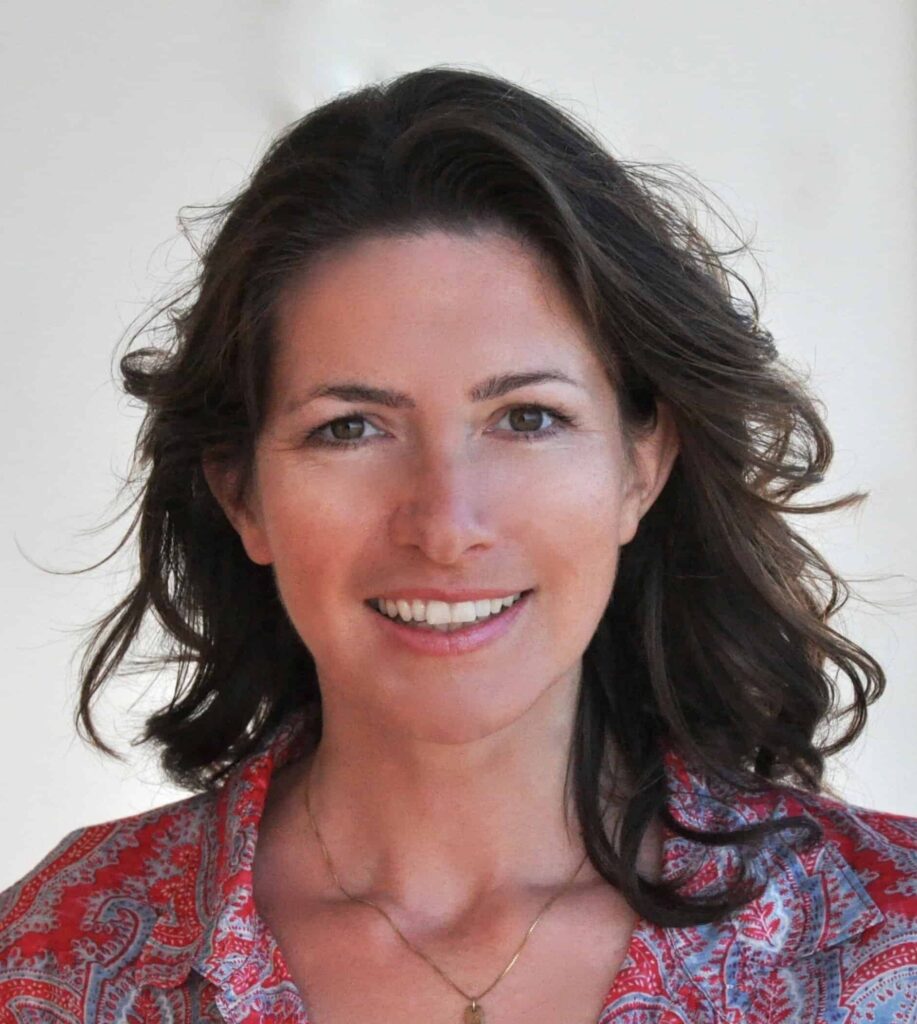Women are still underrepresented in medical research. But thanks to trailblazers like cardiologist Marianne Legato and patient advocate Carolyn Thomas, that’s starting to change.
When Carolyn Thomas suffered her first heart attack in 2008, she was in her fifties, a distance runner and as fit as can be. Yet the doctor in the ER diagnosed her with acid reflux, sent her home without treatment and told her she simply needed to rest.
“I felt so embarrassed for having made a big fuss over nothing that when my symptoms later returned, there was no way I was going back to that ER for help,” says Thomas, a PR manager in Victoria, Canada.
Two weeks later, she had another massive heart attack that proved nearly fatal. The first doctor had not realized that Thomas was in the midst of a life-threatening health crisis.
Men suffer heart diseases more frequently, but for women, they are more often fatal. One reason has now been well-documented: Doctors primarily train with the symptoms of middle-aged male patients and often miss the signs of the “Eve-attack.”
“There are so many studies about coronary disease where women have been completely excluded,” Thomas says. “I had textbook symptoms, including chest pain, nausea, sweating and pain radiating down my left arm; if that ER doctor had simply Googled my symptoms he would have found only one result.”
When asked, most women believe the number-one cause of death for women in the US is breast cancer, but it is actually coronary disease. Yet women’s symptoms are overlooked so frequently that after her own experience, Thomas became a Mayo Clinic-trained women’s health advocate and, at the request of Johns Hopkins cardiologists, wrote a book and started a blog about the issue, Heart Sisters, where hundreds of women share similar experiences.
“I don’t know why there’s so much resistance to the notion of gender medicine and why women are still trivialized and told with a disturbing frequency their complaints are the result of emotional distress,” says renowned cardiologist Marianne Legato, who has been instrumental in researching women’s health. In 1997, she founded the Partnership for Gender-Specific Medicine at Columbia University, and in 2006, she established the nonprofit Foundation for Gender-Specific Medicine that she still chairs. Legato coined the phrase “bikini medicine” to describe “the outdated notion [that] only women’s breasts and their pelvis were of interest to us doctors, because that was the only point of difference between the sexes.”

Thirty years ago, Congress ordered the National Institutes of Health to make sure women were included equally in clinical trials. But in reality, imbalances continue. “Research on women’s health has been underfunded for decades, and many conditions that mostly or only affect women, or affect women differently, have received little to no attention,” First Lady Jill Biden said in October when she announced that the Biden-Administration will direct $110 million toward ARPA-H (The Advanced Research Projects Agency for Health) Sprint for Women’s Health initiative to research illnesses that primarily affect women and to make sure more women are included in trials. In 2023, she announced the first-ever White House Initiative on Women’s Health Research. “Because of these gaps, we know far too little about how to manage and treat conditions like endometriosis and autoimmune diseases like rheumatoid arthritis,” Jill Biden said. “These gaps are even greater for communities that have historically been excluded from research — including women of color and women with disabilities.”
Some solutions are obvious:
1. More female doctors
A study of 580,000 heart patients in Florida hospitals concluded that female patients’ survival chances were two to three times higher when they were treated by female doctors. A Harvard study arrived at similar results when it looked at treatment outcomes for older women in internal medicine. “The difference in mortality rates surprised us,” said lead author Yusuke Tsugawa. “The gender of the physician appears to be particularly significant for the sickest patients.” The study concludes that up to 32,000 lives could be saved every year if male doctors learned to treat female patients better. This is roughly the figure of people killed in car accidents in the US.
Currently, more than half of medical students are female but only about 37 percent of practicing doctors. “Female doctors not only know the science, they are also better listeners and less likely to discount female patients’ narrative,” Legato explains.
2. Educating doctors as well as patients
This goal lies at the heart of Legato’s work. During her medical training, she says, “We were traditionally trained that whatever is going on with the male body, you can extrapolate that to a female body. Save the expensive effort of looking at both sexes.” As a doctor’s daughter, she “grew up in the academic community, and I can tell you it was full of misogyny that has not entirely disappeared.”
But while Legato was a molecular cardiologist at Columbia University, reporter Carol Colman came to seek her advice, convinced her mother’s coronary disease had been minimized. Legato soon discovered that Colman’s suspicion was correct: “Women were not treated aggressively enough for coronary disease, their complaints were trivialized as neurotic or emotional to a degree that was really shocking.”

In 1997, Marianne Legato founded the Partnership for Gender-Specific Medicine at Columbia University, and in 2006, she established the nonprofit Foundation for Gender-Specific Medicine. Credit: Hechler Photographers
In 1992, Legato and Colman published The Female Heart, a groundbreaking book for mainstream readers that won the American Heart Association’s Blakeslee Award. Legato is a legend in the medical community because she didn’t stop there. Her foundation supports original research in gender-specific medicine and educates the general public as well as the medical community about the fact that the XX and XY chromosomes influence everything from cells to the brain to the immune system. For instance, women’s immune systems are more aggressive, which explains why four out of five patients with autoimmune disease are women. “Even molecules react differently,” Legato affirms. But it takes years, often decades, until new research is sufficiently established to find its way into the training curricula of the next generation.
In the meantime, Legato encourages female patients to speak up and insist their doctors take them seriously: “Don’t hesitate to speak up and say, ‘I think you’re being dismissive of me, and I would like to choose another physician.’”
3. Including patients
Carolyn Thomas advocates for the Patients Included movement, which encourages doctors and researchers to listen to patients and include their experiences in their work. For instance, Thomas witnessed first-hand how two female spontaneous coronary artery dissection (SCAD) patients approached cardiologist Sharonne N. Hayes at the Mayo Clinic and offered her access to their SCAD support group with 80 members. SCAD, a condition in which a tear in an artery wall blocks or reduces blood flow to the heart, largely affects young women with hardly any cardiac risk factors. It was considered a very rare disease until Hayes started researching it and became a world-renowned authority on the condition. “Now doctors no longer consider it rare, it was just rarely diagnosed,” Thomas says. “Survival rates are now in the 90 percent range, whereas before, 70 percent of SCAD cases were diagnosed in autopsy.”
4. Parity in testing and trials
The disparities start in the lab. New medication used to be tested only on male mice, because researchers feared hormonal fluctuations could influence the outcomes. Even in human trials, women were mostly excluded from participating in clinical studies until far into the 1990s. “When we demanded that women were equally included in tests, we were asked, ‘But where would we find such women? And what if they get pregnant?’” Legato remembers.
Not least thanks to her research and initiative, women started to be involved in clinical trials in the ’90s. The situation has improved, but women are still far from participating in trials equally. Improving the quota is one of the goals of the new White House initiative.
5. Funding
Another piece of the puzzle is increased funding for women-specific illnesses. According to McKinsey, only one percent of health care research and innovation is invested in female-specific conditions beyond oncology.
A recent Davos study by the Global Alliance for Women’s Health argues that it’s simply too expensive to ignore half of humankind: Every dollar invested in women’s health yields $3 in economic growth, and the global economy could gain $1 billion every year if health systems treated women as well as men. “The women’s health gap equates to 75 million years of life lost due to poor health or early death each year,” the analysis finds. “Closing the gap would give the 3.9 billion women in the world today an extra seven healthy days a year, or an average of 500 days over a lifetime.” The National Institutes of Health have launched several funding opportunities to research health disparities among women of underrepresented or underserved populations.

“Women were not treated aggressively enough for coronary disease,” Legato learned. “Their complaints were trivialized as neurotic or emotional to a degree that was really shocking.”
The disparities continue with medication: Women’s bodies absorb some active ingredients differently than men’s; for instance, they benefit from a significantly lower dose of beta blockers. Legato mentions Ambien as another example of a drug that has significantly higher side effects for women. But it took a quarter century after the drug’s approval for the Food and Drug Administration to require a lower dosage for women.
Impact
Progress is slow, but visible: Research in gender-specific medicine at least doubled in the last decade.
Men benefit from gender-specific medicine, too. “For instance, we were underestimating osteoporosis in men,” Legato gives as an example, “and depression, because men might present more as angry or abuse alcohol when they are actually deeply depressed.”
Legato says what concerns her most “is the inequality of women on a global level, how they are just [seen as] disposable.”
She is networking with the International Society for Gender Medicine, which includes the Karolinska Institute in Sweden and the Rabin Hospital in Israel as well as centers in Vienna, Italy and Japan. The differences between the countries are stark. In Germany, for instance, Europe’s biggest research hospital, the Charité in Berlin, founded the Institute of Gender in Medicine with cardiologist Vera Regitz-Zagrosek at its helm in 2003, while the University of Zurich just hired its first professor for gender medicine, Carolin Lerchenmüller, last May.
And while gender medicine continues to progress, Legato is aware of “another boomerang”: “The question of biological sex is not that simple anymore. It isn’t just XY or XX anymore.” She is currently updating her book about the “plasticity of sex,” and notes, “it’s such a complex question, and a hot pit of emotion.”
Legato is proud of the progress she’s helped the medical world achieve. “I was an important factor in convincing the medical community that men and women are not alike in their physiology,” she says, “and I would say that’s not a trivial contribution.” She’d love to be remembered by a simple fact: “She made a difference.”
Carolyn Thomas, too, has made a difference: She saved lives by giving talks educating “heart-smart women.” At one presentation she gave at the University of Victoria, a woman in the auditorium recognized during the talk that she was experiencing the exact symptoms Thomas was discussing and sought immediate help.
Thomas likes to leave her audience with one piece of advice: “Trust that little voice in your head that tells you something is wrong. One reason women delay seeking care is that women have been socialized not to make a fuss and to put our needs at the bottom.” When she had a severe cardiac episode on a long plane ride, she didn’t dare to alert the flight attendant to request an emergency landing.
“So I tell my audience, What would you do if this was your daughter experiencing these symptoms? I would have been screaming to turn the plane around,” Thomas says. “Do the same thing for yourself.”

Written by Michaela Haas
Michaela Haas, Ph.D., is a Contributing Editor at Reasons to be Cheerful. An award-winning author and solutions reporter, her recent books include Bouncing Forward: The Art and Science of Cultivating Resilience (Atria). Visit www.michaelahaas.com.
Article first published: https://reasonstobecheerful.world/bridging-womens-health-gap/

